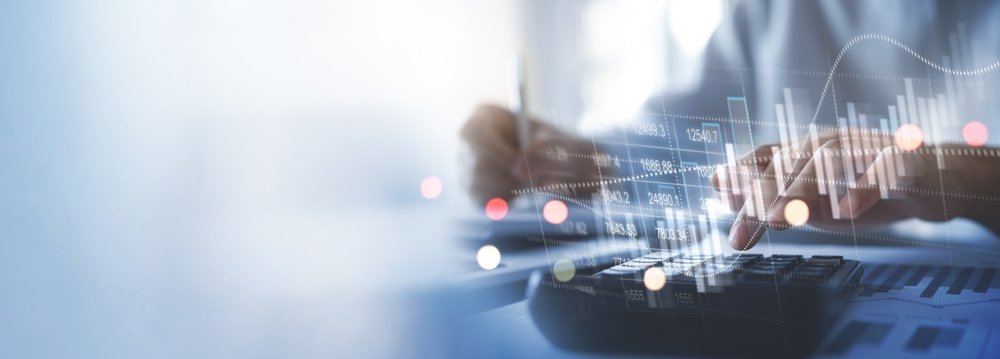
How Much is VAT?
This article delves into the different VAT rates in the UK, which types of goods and services are subject to each rate, and how VAT is calculated.
VAT (Value Added Tax) is a type of tax applied to the sale of most goods and services in the UK. Introduced in 1973, VAT is a significant revenue source for the government, contributing billions of pounds annually. For businesses and consumers alike, understanding how much VAT is and how it applies to various transactions is essential. This article delves into the different VAT rates in the UK, which types of goods and services are subject to each rate, and how VAT is calculated.
Overview of VAT Rates in the UK
In the UK, there are three main rates of VAT:
Standard rate (20%)
Reduced rate (5%)
Zero rate (0%)
Additionally, certain goods and services are exempt from VAT altogether. Here's a detailed breakdown of each VAT rate:
1. Standard Rate – 20%
The standard VAT rate in the UK is currently 20%. This rate applies to the majority of goods and services sold by VAT-registered businesses. Unless a specific product or service is listed under a reduced rate, zero rate, or exemption, it will likely fall under this standard rate category.
Examples of goods and services subject to the 20% VAT rate:
Electronics (computers, televisions, phones)
Furniture and household items
Professional services (legal, consultancy)
Non-essential clothing and footwear
Alcoholic drinks and tobacco
Hotel accommodations
Haircuts and beauty services
This is the most commonly encountered VAT rate for consumers in the UK.
2. Reduced Rate – 5%
The reduced VAT rate of 5% applies to certain goods and services that the government deems as essential or that contribute to energy efficiency and health benefits.
Examples of goods and services subject to the 5% VAT rate:
Children’s car seats
Energy-saving materials such as insulation, solar panels, and heat pumps
Gas and electricity for domestic use (households)
Some residential renovations and conversions
The reduced rate is aimed at easing the cost burden on households and encouraging energy-efficient improvements.
3. Zero Rate – 0%
Zero-rated items are subject to VAT, but at a rate of 0%. While businesses are required to record sales of these goods and services for VAT purposes, no VAT is charged to the customer. Businesses that sell zero-rated items can still reclaim VAT on the expenses incurred in providing those goods or services.
Examples of zero-rated goods and services:
Most food and drink (excluding alcohol, confectionery, and restaurants)
Children’s clothing and footwear
Books, newspapers, and magazines
Prescription medicines
Public transport (bus, train tickets)
Exports of goods to non-EU countries
Though zero-rated goods and services do not incur VAT, businesses still need to account for them in their VAT returns.
VAT Exempt Goods and Services
Some goods and services are exempt from VAT altogether. This means that VAT is not charged on the sale of these items, and businesses cannot reclaim any VAT on costs related to them.
Examples of VAT-exempt goods and services:
Education and training services
Health services provided by doctors and dentists
Insurance and finance
Postage stamps
Property transactions (sale of some residential properties)
It's important to differentiate between zero-rated and VAT-exempt items because zero-rated businesses can still reclaim VAT on their purchases, whereas exempt businesses cannot.
Calculating VAT
For consumers, VAT is usually included in the price of goods and services. However, businesses often quote prices excluding VAT. To understand how much VAT you're paying, it's useful to know how VAT is calculated.
Here’s how VAT is calculated in different situations:
To calculate the VAT element of a price:
If a price includes VAT and you want to work out how much of it is VAT, divide the price by 1.2 for goods subject to 20% VAT (or 1.05 for goods subject to 5% VAT).
Example: A TV costs £600 (including VAT). To calculate the VAT included:
£600 ÷ 1.2 = £500 (net price before VAT)
£600 - £500 = £100 (VAT component)
2. To calculate the VAT on a net price:
If you have the price excluding VAT and want to add VAT, multiply the net price by 0.20 (for 20% VAT) or 0.05 (for 5% VAT).
Example: A service costs £500 excluding VAT, and you want to know the total cost including 20% VAT:
£500 x 0.20 = £100 (VAT)
£500 + £100 = £600 (total price including VAT)
How VAT Works for Businesses
For VAT-registered businesses, VAT works both ways: they must charge VAT to their customers (output VAT) and pay VAT on the goods and services they purchase (input VAT).
Output VAT: This is the VAT businesses charge on the goods and services they sell. They are required to charge the correct VAT rate based on the type of product or service they sell.
Input VAT: This is the VAT businesses pay on the goods and services they purchase for business use. Businesses can generally reclaim the VAT paid on their purchases (input VAT) by deducting it from the VAT they owe to HMRC.
At the end of each VAT accounting period (usually every quarter), VAT-registered businesses must submit a VAT return to HMRC. This will include details of:
VAT charged on sales (output VAT)
VAT paid on purchases (input VAT)
If the output VAT exceeds the input VAT, the business pays the difference to HMRC. If the input VAT exceeds the output VAT, HMRC refunds the difference to the business.
VAT Registration Threshold
Not every business in the UK is required to register for VAT. Businesses must register for VAT with HMRC if their taxable turnover exceeds the VAT registration threshold, which is currently £85,000.
Businesses below this threshold can voluntarily register for VAT if they choose, which allows them to reclaim VAT on their purchases.
How VAT Affects Consumers
For consumers, VAT is often invisible, as it is included in the price of most goods and services. This means that when you buy something in a shop, the price displayed already includes the VAT. However, for certain larger purchases or services (such as building work), the quoted price may be given as excluding VAT, and VAT will need to be added to the final cost.
How to Pay VAT to HMRC
Businesses that are VAT registered are responsible for collecting VAT and submitting it to HMRC via a VAT return. The VAT return is typically filed quarterly, though some businesses may file it annually. Businesses can pay VAT via several methods:
Direct debit: Automatic payment from a business bank account.
Online banking or Bacs: Payment made through the business’s bank.
Debit or credit card: Payment via HMRC’s online portal.
Conclusion
VAT plays a significant role in the UK economy, affecting businesses and consumers alike. The standard rate of 20% applies to most transactions, while certain goods and services benefit from reduced or zero rates. Understanding how VAT works is important for both consumers and businesses to ensure compliance and manage costs effectively.
Whether you're a consumer calculating the VAT portion of a purchase or a business managing VAT returns, knowing how VAT is applied in various situations helps to make better financial

Need Help with VAT?
Our team of tax specialists are here to help you every step of the way, from registering your business for VAT to submitting your tax return. We offer fixed priced accountancy services and handle all of your filing responsibilities leaving you stress free and up to date.
Whether you already VAT registered or thinking of registering, give us a call today for a free non obligated consultation to see how we can assist you.
Strategic Support for Your Business
Explore our comprehensive accountancy packages tailored to your business.
Self Assessment Tax Returns
From £85 per annum
Whether you are in the early stages of trading or considering starting a business, we can provide you a stress free and fixed price service when it comes to self assessment tax returns.
CIS Tax Returns
From £50 per month
Whether you are operating as a contractor or the sub-contractor, our specialist team will take control of all your CIS affairs from start to finish, leaving you to concentrate on your business.
Corporation Tax Returns
From £625 per annum
Are your Management Accounts, Corporation tax return and confirmation statement now due? Let us handle your entire end of year requirements for a fixed, competitive annual fee.
PAYE
From £50 per month
Whether you are a one man band, new start-up or mid-sized business, we have the flexible payroll solution for your business that allows you to pay your employees right, and on time.
VAT Returns
From £90 per submission
Our qualified and experienced team will prepare & submit your all-year-round VAT reporting and returns on your behalf for a fixed price monthly fee, no hidden costs or surprises.
Bookkeeping
From £35 per month
Provide us with your receipts, bank statements and invoices and we will give you reports on a monthly/quarterly basis allowing you to make decisions that grow your business.
